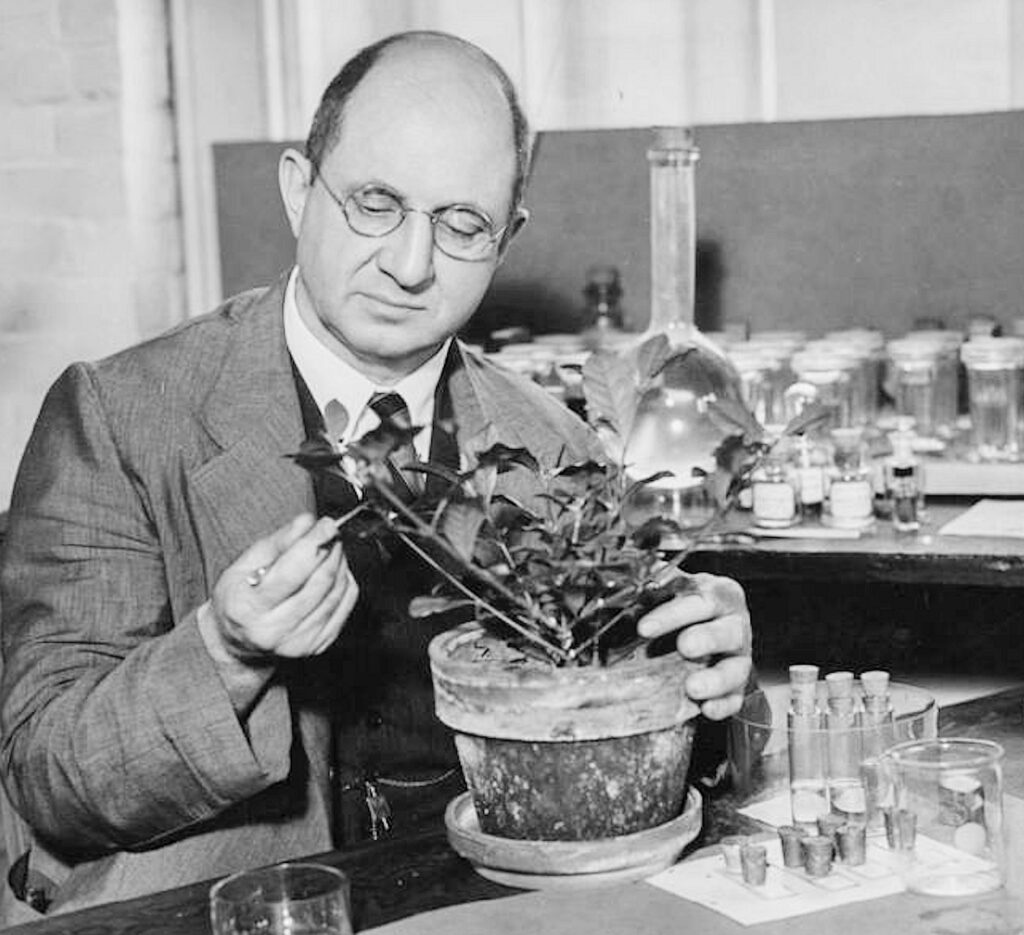On November 16, 2024, the Rhode Island Natural History Survey honored Walter Henry Snell (1889-1980) with a Posthumous Distinguished Naturalist Award. The successful letter of nomination was submitted by Brown Herbarium Director Rebecca Kartzinel and URI Professor Emeritus Keith Killingbeck.

We would like to nominate Dr. Walter Henry Snell for consideration as a Rhode Island Natural History Survey Posthumous Distinguished Naturalist. Dr. Snell was a highly respected botanist, mycologist, and athletic coach at Brown University until his retirement from his teaching position in 1959.
Although Dr. Snell died in 1980 (19 May 1889-23 July 1980), he resurfaced on our radar recently when important collections of fungi that he made were discovered in the KIRI Herbarium at the University of Rhode Island. Those specimens were part of a larger collection of plants and fungi that were as yet unprocessed and were being donated to the Brown University Herbarium. Our curiosity about Dr. Snell’s career and accomplishments led us to discover that he was indeed a distinguished naturalist.
His Ph.D. nearly in hand from the University of Wisconsin in 1920, Snell was first hired as an instructor by Brown University and gained the title of Assistant Professor and Department Chair that same fall semester as he officially earned his Ph.D. His study of Basidiomycetes during his doctoral degree research was just the beginning of a long, productive career in the field of mycology. He had decades-long-running studies on the basic biology of white pine blister rust -at the time, a recently-introduced pathogen threatening the economically important timber species Pinus strobus (white pine). Later he began studies of the boletes, publishing taxonomic revisions and keys starting in the 1930s and becoming a renowned expert on the identification of these species. According to the MycoBank taxonomic database he is credited with describing and naming at least 41 new species of fungi, most of them in the Boletaceae.
Dr. Snell’s publication record includes 74 journal articles and four books, three of which were co-authored by Esther A. Dick. The most significant of the books was The Boleti of Northeastern North America published in 1970, 11 years after he had officially retired. The illustrations in this compendium of boletes included more than 400 original watercolors of the fungi, all done by Snell himself.
Thank you for considering Dr. Walter Henry Snell for a RINHS Posthumous Distinguished Naturalist Award.
—Rebecca Kartzinel, Director, Brown University Herbarium
—Keith Killingbeck, Botany Professor Emeritus, University of Rhode Island